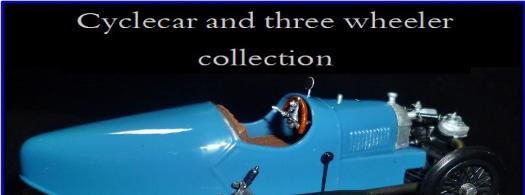Messerschmitt KR200 History
Messerschmitt are clearly best known for their aircraft and particularly the World War II fighters, but after World War II the company was banned from making aircraft for some time. Obviously the company had to produce something else and diversified into cars, well micro-cars really.
The story started in 1952 when Fritz Fend approached Messerschmitt with the idea of manufacturing small motor vehicles. His idea was the KR175, based on his 1948 Flitzer invalid carriage, and which went on to become the KR200 “Kabinenroller” or more accurately Scooter with a a cabin. By 1953 Fend had his contract with Messerschmitt to mass-produce the car. Fend, designed the little three wheeler partly as an invalid carriage and actually boasted that “if you have a head you can drive a Messerschmitt”. That might have been a little bit of an exaggeration but the car certainly was available in a wide variety of configurations to aid drivers with almost any type of disability. Production was started in Regensburg under a new and separate company called Regensburger Stahl und Metallbau GmbH. Although the car still carried the Messerschmitt name and insignia it was to all intents and purposes a separate venture.
There are many myths surrounding this car, such as the canopy was from leftover Me109 fighter planes and the wheels were from the said fighter too. There is no truth to any of this and the only links to the aircraft is the name and Fend was an aircraft designer who had been a technical officer in the Luftwaffe.
The KR200 was on the same basic frame as the KR175 but now powered by a Fichtel & Sachs 200 AZL-R engine 191cc two-stroke engine of around 10hp cooled by a fan forcing air around the unit. Changes to the bodywork were not radical but most noticeably included wheel cut outs in the front fenders providing better access for wheel changes and servicing. The wind shield wiper on the KR175 was manual but on the KR200 had an electric motor to power the sweep.
It still had two steering wheels and the front and a single centre mounted driven wheel at the rear. Seating was in a tandem affair which helped greatly with weight distribution. The rear seat also had a split third which could be folded up to allow a small amount of luggage space. This seating arrangement helped reduce frontal area and drag, aided handling and had the added advantage of requiring no alterations for left or right hand drive export markets.
To gain entry to the cabin the whole top, included the acrylic bubble or all the windows, wind shield, window frames, folding top on roadster and "kabrio" models and the frame in which they were set, lifted up and over allowing the driver and passenger clambered in over the “V” shape of the side panel.
Initially the car had four forward gears but no reverse gear but instead having a reversing starter. The gearing system was much like a motorcycle gearbox and required the driver to go up and down the gears sequentially. The gear shift lever had a second smaller lever on it which would put the car in neutral regardless of what gear it had been in before, useful for the stop and reverse system but when the driver wanted to pull away again from a junction he still had to shift back down through the gears to get to first.
To gain a reverse gear the reversing starter was actuated from a dual-mode ignition, meaning normal starting from the key for forward travel but stopping the engine and restarting the motor with the key pushed in further started the two-stroke engine in reverse. The reverse motion of the motor thus provided reverse gear; and in theory gave the vehicle four reverse gears. Braking was by cable operated drums on all three wheels which were enlarged for the KR 200 making the tire sizes 4.00×8. An unusual suspension system was employed called torsilastic springs. Torsilastics is actually a rubber cylinder with an metal outer casing cast onto it and a splined inner tube also cast into the unit. This combination then imitates a torsion bar but the rubber is flexing not the metal making it a torsion-elastic spring. These spring suspension items were supplemented with hydraulic shock absorbers installed on all three wheels.
At first the throttle was in the form of a motorcycle style hand grip on the steering handlebar but this was soon dropped in favour of a conventional foot pedal accelerator in fact the KR200 soon adopted a full three pedal layout. Steering was by a handlebar more like a scooter than the steering wheel of a car. This quirky item remained throughout production and proved very effective. This was partly because it acted directly on the track rods without any reduction gearing so small movements of the handlebars produced significant movement in the wheels. Apparently the KR200 could reach around 105km/h (65mph) mostly due to the vehicles light weight and aerodynamic shape than the 10hp motor. More impressive were the mpg claims, as much as 87mpg-imp(3.2 L/100km) being cited for fuel consumption.
About 10,000 of the original KR175 cars were built in 1953 and 1954. In the spring of 1955 the KR200 took over in direct competition to the BMW Isetta and dealers sold 12,000 vehicles that year; the best sales year for the model. Original 1955 models stand out from the later models by having louvred openings in the top of the rear bonnet. These vehicles sold for around DM 2,500 and were not only an instant success in Germany but also sold strongly in the United States of America. The majority of American vehicles sold through Frank Sennes Motor Corporation of Glendale, California, who also imported for the whole of the USA. The "Export" model included two-tone paint schemes, painted hubcaps, fully trimmed interior, a heater, a clock, and a sunshade for the canopy. Optional extras consisted of a set of lightweight tube bumpers for an additional cost of $50 on top of the $1,073 new price in 1956.
Another 1955 Messerschmitt KR200 event was a series of record attempts. Primary among them was an attempt at the 24hr world record for low-displacement (under 250cc) cars. A special single seat KR200 with highly modified engine and special aerodynamic body work was produced. Aside from the previously mentioned modifications the only other items non-stock were duplicated control cables for safety purposes. At Hockenheimring on the 29th-30th of August, 1955 this car set the record in it's class at 103km/h (64mph); in all it set 22 new international speed records.
By 1956 Messerschmitt had lost interest in Fend's micro-cars as they were once again allowed to manufacture aircraft. Convinced of the profitability of his design Fend approached Valentin Knott, the brake and hub supplier for the little car, and together they purchased the Regensburg works from Messerschmitt and formed a new company.
Sales in the UK were boosted by the The Suez crisis of 1956 which brought fuel rationing to the UK and led directly to the importation of large numbers of small vehicles. Messerschmitts became firmly established in the UK with an extensive dealer network being developed.
In 1957 the KR200 Kabrio model were built. These models had a cloth convertible top and fixed side window frames. This was followed by 300 limited edition KR201 Roadsters which a folding cloth top, a windscreen, and removable side curtains. Another new model was the Sport Roadster which had only a windscreen and a tonneau cover with wood side trim were the side window frames used to be. These cars did not have the top-over opening so the driver had to clamber in over the side of the vehicle. From 1959 FMR made all four versions were made available for sale.
As the European economy improved following the WWII problems and the aftermath of the Suez crisis demand for basic economy transport diminished. In Britain the Mini was swallowing up the small car market and the popularity of the little “bubble” cars diminished rapidly. Sales of the KR200 fell away rapidly and by 1964 production was stopped. During the ten years or so the Messerschmitt KR200 was in production some 40,000 examples were produced.
Legacy
There are many KR200 cars still in being around the world with thriving owners clubs in Germany the USA and the UK. The British groups being the second biggest behind the German clubs with 500 Messerschmitts on the British roads. Collectors have been known to pay as much as €20,000 for a well-maintained "Schmitt" but for most drivers/owners the attraction of these cars is their quirky character rather than any monetary value.






1/43rd scale kit
Built by Ian





This white metal hand crafted kit by Bill Barnes was originally produced in the 1970s Under the trade name of Tober Models, after a brief resurgence in the 1990s they went out of production well over a decade ago. The white metal casting and is a little crude by the standards of today's model kits, but we are talking about a cottage industry of around 50 years ago.
The fit of parts is far from positive even vague is being generous but as most of the parts on this model were scratch built by Ian, that wasn't a real handicap. All the interior detail from the pedals and steering linkage to the door cards and handles, the piping on the seats and the retaining strap for when the top is opened up. The glazing was all cut from clear acetate to fit the frames, even the curved front windscreen. The front and rear lights are scratchbuilt as the front ones on the model were indistinct and the rear lights were just not there. Making lighting frames in such a small scale isn't easy at all but we got there in the end. The model was built over a three month period from September to November 2015.
Painting was with Alclad II white Primer and Plamo UK custom mixed Ferrari red, topped by Plamo gloss topcoat, all applied by airbrush. Detail painting is done by brush with Citadel and Deco-Art acrylic paints backed up with Humbrol enamels. Bare Metal Foil was used for the chrome details along with Alclad II on the wheels.
RETURN TO :-
